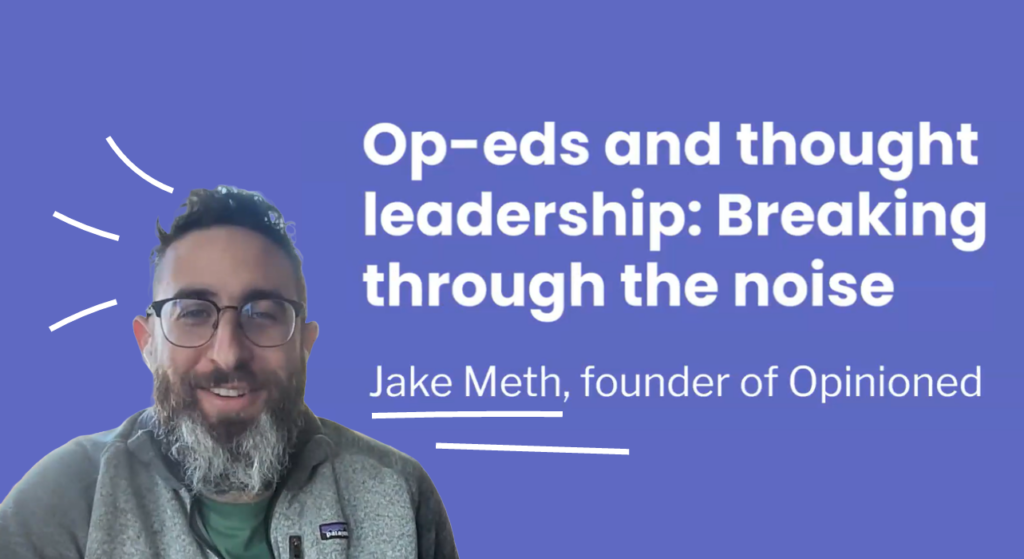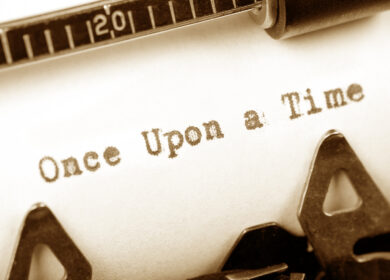In public relations, pitching journalists is what we spend much of our time on. It’s a delicate alchemical process, a mix of sales, storytelling, writing and psychology. However, there’s no one way to pitch a story, no magic formula. But there are things you can do to maximize your chances that your target opens and reads your pitch.

Jake Meth – now the founder of Opinioned and former commentary editor at Fortune – works to help his clients place op-eds in top media. He also writes the newsletter Pitches Get Stitches, which evaluates reader-submitted op-ed pitches and offers guidance on how to pitch better.
He recently spent time with The Hoffman Agency to talk about more meaningful pitching and shared some enlightening takeaways.
A Successful Pitch Starts Long Before Hitting Send
The ideation stage is where a pitch’s chances for success rise or fall.
“We need to start by thinking about the idea itself before we strategize on how to sell it to media,” said Meth. “Let’s be honest, this is hard.”
Meth further explained that PR agencies often don’t have full control over an idea or topic they are pitching due to client mandates, sometimes even only having a partial view of the topic.
Meth recommends asking yourself a few questions early to smooth the process:
- Who’s “driving the bus?”
- Is this idea from a client or did it come from the agency? If it’s from the client, there’s a chance it may need more work in the ideation process, since clients have their motivations and ideas on what’s media-worthy. If it came from the agency, there’s a higher chance it’s more “media-ready” and may need less time spent honing.
- Is this idea original?
- A simple Google search can determine how unique an idea is. That’s not to say every idea needs to be 100% unique, but if it is a topic that is well covered, a unique angle or point of view will be needed. More on this later.
- Is the source qualified?
- Sometimes, a source attached to a pitch may be an expert in an area of a topic, but not the whole thing. In an interview setting, this can get awkward if the topic and area of focus isn’t clear, so you’ll want to make sure the spokesperson is well suited for the topic at hand and for all the questions a journalist may ask.
How to Generate a Compelling Idea
We’ve established that idea generation is something PR people and thought leaders must spend time on. But how? What steps can we take to ensure that an idea is worth an editor spending valuable editorial space on?
- Watch the news. How can you expect news coverage if you don’t know the news landscape? Take notes, read what your target editors publish daily, think of unique angles that haven’t been covered in headlines thus far, etc. All this will help your PR efforts.
- Have a plan. An idea is great, but without a plan, it won’t go anywhere. So, discuss timing, prep experts, identify possible hurdles and do the homework to maximize chances of the desired result: op-ed coverage or securing a media briefing.
- Create space with SMEs. Prep calls with SMEs need to be longer than 30 minutes. “By the time pleasantries are done, half the call is over, and you didn’t get anywhere,” Meth said. He recommends an hour as that extra time allows the expert or executive to get comfortable and “go deeper” on the topic, leading to a better result.
- Act like an editor. This is where you need to be tough. Not all ideas are good ones and knowing when to say “no” is key. “Thinking like an editor” may mean saying, “No, but how about this instead?” If an idea is a total dud, rely on facts and evidence when pushing back to clients if possible.
- Invest in original ideas. Just as you shouldn’t spend too much time on low-quality ideas, you should spend more time on quality, original ideas. Packaging ideas that are unique and original is a better use of time than trying to get a bad idea to look better.
To get more insights, check out Jake Meth’s tips on op-ed writing and browse the What’s Happening Agency Blog.

